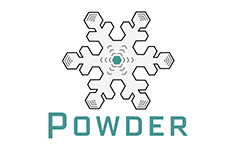SoC Researchers Secure National Funding to Build Wireless Living Laboratory, Spur Global Tech Innovations
July 3, 2018

The University of Utah is at the global vanguard of wireless communications thanks to School of Computing Associate Professor Kobus Van der Merwe and the Flux Research Group. A National Science Foundation (NSF) affiliated initiative selected the group to build one of only four city-scale research test beds in the US, part of a $100 million public-private partnership that aims to revolutionize the country’s wireless ecosystem.
“We’re building a lab where people are going to design the next generation of technology we use,” Van der Merwe said. “In the US, much of the work to enhance experimental wireless and mobile research capabilities has been theoretical. This is a call to action—to get our hands dirty and do it for real.”
Decoding PAWR
-
Platforms for Advanced Wireless Research (PAWR) is a public-private initiative between the National Science Foundation (NSF) and a group of companies that committed resources to the program.
-
Because of the scale of the program, the NSF created a PAWR Project Office (PPO) to oversee the program on behalf of the NSF. The PPO is jointly operated by US Ignite and Northeastern University.
-
Platform for Open Wireless Data-driven Experimental Research (POWDER) is the name of the UofU platform, which is one of the (anticipated) four platforms that will be funded through PAWR.
The NSF joined with a consortium representing more than 25 of the nation’s leading wireless companies to fund the initiative, Platforms for Advanced Wireless Research (PAWR). During an April 9 news conference at the U, following a yearlong application process that included repeated site visits, PAWR representatives announced they’d selected the U and Rice University to build a living laboratory in Salt Lake City for telecoms, tech companies and researchers to test wireless innovations in the real world. The PAWR Project Office also tapped a group of universities in the New York City area to build a complementary platform there, the second of up to four test beds. The Salt Lake version has been dubbed the Platform for Open Wireless Data-driven Experimental Research (POWDER), and will be one of the first of its kind in the country and one of the largest and most complex in the world.
Gov. Gary Herbert called the living lab a win for Utah, which bills itself as business friendly and boasts a booming tech industry marketed as the Silicon Slopes. “The new wireless test bed in Salt Lake City will bring increased connectivity for our state—and prepare us for the future,” Gov. Herbert said. “This project will significantly bolster our ability to remain at the forefront of the tech world, and I look forward to seeing how it spurs on technological innovation here in Utah.”
The lab will be built on the U campus and through a section of downtown Salt Lake City. The U and Rice will receive $17.5 million from the PAWR Project Office and up to $10 million in equipment and services from the consortium to build and operate the platform for the first five years. Of the $17.5 million, $11.25 million goes to the U and will be used to buy equipment, pay researchers and developers (including hiring at least one additional software developer), and build out the actual network infrastructure around the city, Van der Merwe said.
Since the application process, city officials have worked closely with Van der Merwe’s team to ensure the project’s success. “We see POWDER as a public validation of the forward-looking, innovative perspective that characterizes the Salt Lake City of today,” said Gregory Daly, city chief Information officer and director of information management services. “The research will yield incredibly valuable intellectual property that will benefit the citizenry and businesses of our municipality, the state of Utah, and the nation.”
Van der Merwe’s team secured sweeping community support for the project, one of the reasons the PAWR Project Office picked his group. U departments, the city government and local companies and organizations pledged to assist in various ways, from allowing equipment on roofs and buses to providing network monitoring and fiber infrastructure. “It was humbling to pitch our project and have the community not only buy into it, but ask how they could help,” Van der Merwe said.
The Flux Research Group was also chosen because they specialize in building wireless test beds for outside researchers. This gave them an edge over some elite academic applicants that build test beds for internal use, within their own research groups. “We’re smaller, but that’s what we do,” Van der Merwe said. “We build these test beds for other people to use.”
Dr. Erwin Gianchandani, NSF deputy assistant director for computer and information science and engineering, said at the news conference that POWDER could aid development in transportation, virtual reality, real-time data analytics for disasters, and more. Van der Merwe cited the possibility of connecting a network of connected vehicles—not simply self-driving cars, but cars that communicate with each other and surrounding infrastructure. “If a vehicle relies on a network for its safety functions, you want it to be more reliable than your cell phone, which drops calls,” he explained. “If my car needs to know there’s an accident around the corner, network reliability becomes a safety issue.” And a new smartphone born from this living lab, for instance, could be faster, more reliable, and more useful, he said. “All the metrics will be better.”
During the conference, U President Ruth Watkins lauded the test bed for upholding the school’s legacy. “The University of Utah has a long history as a tech hub and innovation hub,” Watkins said, citing Atari, Pixar and Adobe, all of which have founders who attended the University of Utah. “We look forward to POWDER being the next in this succession.”